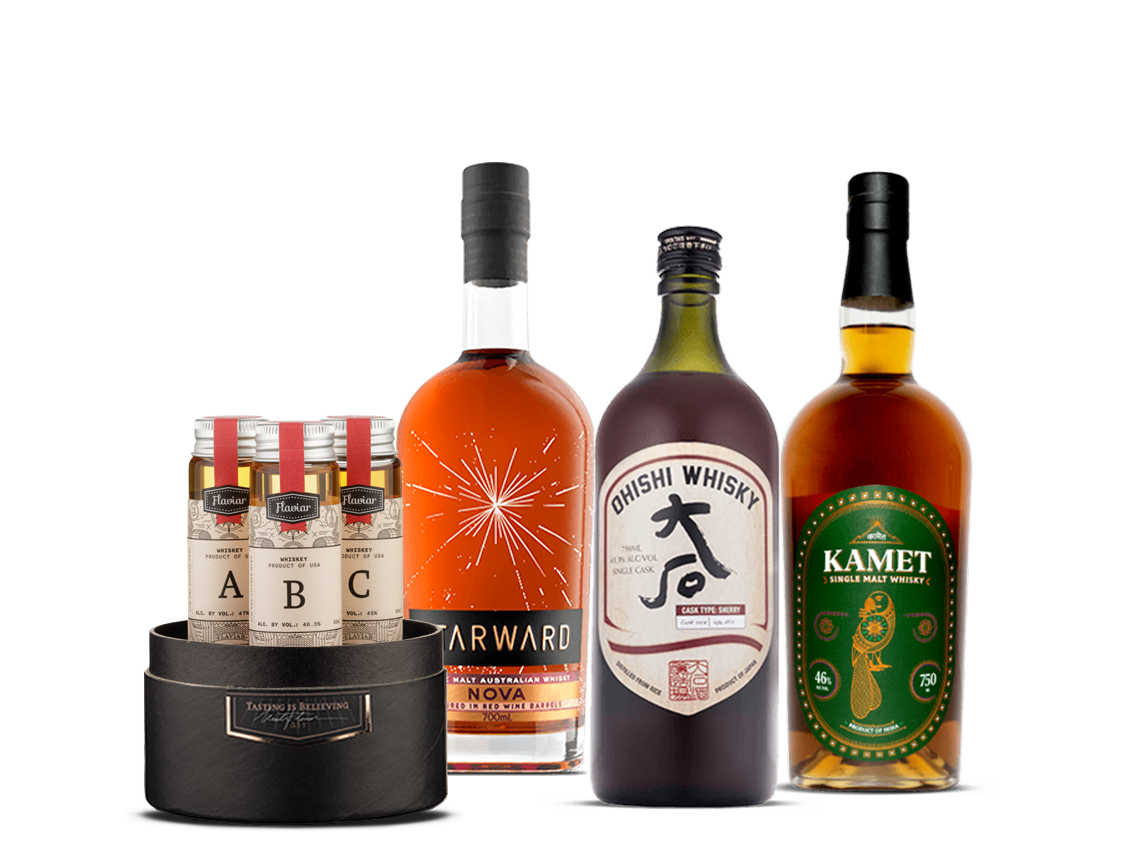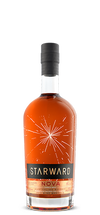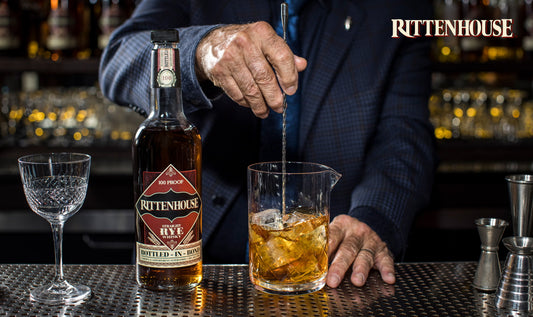Special Price
Asia & Oceania Vol.3
Asia & Oceania Vol.3
Regular price
$46.99
Members' price
$42.29
(−10%)
Whoops... It seems this product is currently not available. Add it to your Wishlist and get notified when it's back in stock.
View full details
- CategoryWhisk(e)y
Now the only thing a gambler needs
Is a suitcase and trunk
And the only time he's satisfied
Is when he's all drunk.
Thing is, you don’t need to lose your shirt in the House of the Rising Sun to taste what the Far East and Oceania are putting out. Nah, you just need your trusty palate and an appreciation for some fine hooch to get in on this game.
And it isn’t just Japan we’re talking about (although they’re definitely killin’ the game). Look beyond those Eastern borders and you’ll discover a Whisky world worth whetting your whistle for.
Riddle us this: what do Australia and India have in common with Japan?
Turns out, it’s an exceptional taste for Whisky. True story.
While Japan has its fair share of awards and medals, including the gorgeous Ohishi Sherry Single Cask Rice Whisky with its tropical fruity flavors, toasted hazelnut and sweet marzipan notes, these two nations are producing some pretty darn exceptional malts that are quickly earning them a reputation in the global Spirits game.
Over in India, for instance, Kamet distillery at the foothills of the Himalayas is profiting from pristine water and fertile soils to make beautiful Single Malt Whisky. Kamet Single Malt Whisky is made from locally-grown six-row barley and distilled in Scottish style pot stills. The palate is lively with fruity, vibrant, and spicy notes that you’ll surely adore.
Down under, Australia’s Starward Nova has been aged in casks that previously held Australian red Wine for about two years thanks to the climate’s speedy aging in "Melbourne years." The result is an attention-grabbing Single Malt with a luxurious mouth feel full of red fruit and honey.
You don’t have to be a betting man to see that these Far East Whiskies offer low-risk and high-return when it comes to flavor. Time to tip up your cup, throw your hands up and toast to these soon-to-be Whiskey high-rollers.
Smartass Corner:
1) You might think the temps in India would spell disaster for Whisky production. On the contrary — it hovers at about 85-degrees Fahrenheit (35-degrees Celsius) making it comparable to Kentucky and Tennessee Whiskey.
2) However, dry conditions are a huge obstacle for Indian Whisky production. The lack of humidity causes the aging process to increase by about six-fold (i.e. a six-year-old Indian Whisky is similar to an 18-year-old Scotch Whisky).
3) India is the biggest consumer of Whisky in the world… But nearly all the "Whisky" produced there is made from molasses-derived Spirit (Rum?), which — according to EU and US legislation — isn’t Whisky at all.
4) While WWII was a horrible time for the world as a whole, Japanese Whisky sales boomed during that time. Sales reports from Suntory and Nikka show a huge boost in domestic consumption during the war, as both companies supplied Whisky directly to the army and Japanese forces.
5) Although Australians have been distilling Whiskey since the mid-19th century, the modern industry really got its start in the mid-1990s when a land surveyor named Bill Lark successfully lobbied against a law that banned microdistilleries.
6) Australian Whiskies tend to set themselves apart from the rest of the Whisky producing world by using Brewer’s malt in their mash bill and using smaller casks for aging. The result: rich, oily malts that stand out from the typical Scotch.
About
Now the only thing a gambler needs
Is a suitcase and trunk
And the only time he's satisfied
Is when he's all drunk.
Thing is, you don’t need to lose your shirt in the House of the Rising Sun to taste what the Far East and Oceania are putting out. Nah, you just need your trusty palate and an appreciation for some fine hooch to get in on this game.
And it isn’t just Japan we’re talking about (although they’re definitely killin’ the game). Look beyond those Eastern borders and you’ll discover a Whisky world worth whetting your whistle for.
Riddle us this: what do Australia and India have in common with Japan?
Turns out, it’s an exceptional taste for Whisky. True story.
While Japan has its fair share of awards and medals, including the gorgeous Ohishi Sherry Single Cask Rice Whisky with its tropical fruity flavors, toasted hazelnut and sweet marzipan notes, these two nations are producing some pretty darn exceptional malts that are quickly earning them a reputation in the global Spirits game.
Over in India, for instance, Kamet distillery at the foothills of the Himalayas is profiting from pristine water and fertile soils to make beautiful Single Malt Whisky. Kamet Single Malt Whisky is made from locally-grown six-row barley and distilled in Scottish style pot stills. The palate is lively with fruity, vibrant, and spicy notes that you’ll surely adore.
Down under, Australia’s Starward Nova has been aged in casks that previously held Australian red Wine for about two years thanks to the climate’s speedy aging in "Melbourne years." The result is an attention-grabbing Single Malt with a luxurious mouth feel full of red fruit and honey.
You don’t have to be a betting man to see that these Far East Whiskies offer low-risk and high-return when it comes to flavor. Time to tip up your cup, throw your hands up and toast to these soon-to-be Whiskey high-rollers.
Smartass Corner:
1) You might think the temps in India would spell disaster for Whisky production. On the contrary — it hovers at about 85-degrees Fahrenheit (35-degrees Celsius) making it comparable to Kentucky and Tennessee Whiskey.
2) However, dry conditions are a huge obstacle for Indian Whisky production. The lack of humidity causes the aging process to increase by about six-fold (i.e. a six-year-old Indian Whisky is similar to an 18-year-old Scotch Whisky).
3) India is the biggest consumer of Whisky in the world… But nearly all the "Whisky" produced there is made from molasses-derived Spirit (Rum?), which — according to EU and US legislation — isn’t Whisky at all.
4) While WWII was a horrible time for the world as a whole, Japanese Whisky sales boomed during that time. Sales reports from Suntory and Nikka show a huge boost in domestic consumption during the war, as both companies supplied Whisky directly to the army and Japanese forces.
5) Although Australians have been distilling Whiskey since the mid-19th century, the modern industry really got its start in the mid-1990s when a land surveyor named Bill Lark successfully lobbied against a law that banned microdistilleries.
6) Australian Whiskies tend to set themselves apart from the rest of the Whisky producing world by using Brewer’s malt in their mash bill and using smaller casks for aging. The result: rich, oily malts that stand out from the typical Scotch.
Read More
- CategoryWhisk(e)y
Whats in the box?
Flaviar Tasting Box
What is it made of?
































